Lancaster’s Cork Connection | Part 2
From Portugal to Lancaster and Around the World with the Armstrong Cork Company
Written by James McMahon, Ph.D.
My name is James McMahon and for the past few months I have been working as a project archivist for LancasterHistory. My responsibilities include cataloging and digitizing a vast collection of archival materials that document the significant role of the cork industry in the local economy.
In Part I of Lancaster’s Cork Connection, we took a look at how cork is grown, harvested, and processed; the unique properties of cork that make it such a valued industrial, commercial, and domestic resource; and the history of efforts to grow cork oak trees in this country and in our local area. Part II is a chance for me to share some background about the development of the cork industry in our area as well as highlight a few images I found to be of interest from the LancasterHistory collection related to the history of the Armstrong Cork Company (known today as Armstrong World Industries, Inc. and Armstrong Flooring, Inc.). Part III will be a similar focus on images associated with the Dodge Cork Company.
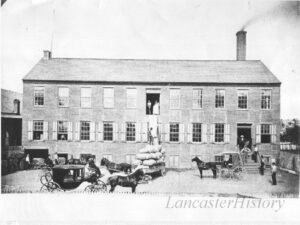
In my short time with the organization, I have learned that while both Dodge and Armstrong (known as Armstrong Cork Company until 1980) have long-established roots in Lancaster County, they were not the first cork companies in Lancaster. That honor goes to Harrison Boardman, founder of the Conestoga Cork Works in 1862. Other manufacturers quickly joined Boardman, including the Lancaster Cork Works in 1875; G.W. Dodge & Son in 1876; Phoenix Cork Works in 1882; Warren Cork Company in 1887; American Cork Company in 1893; McCambridge Cork Company in 1898; and the Dodge Cork Company, in 1926, founded by the grandson of G.W. Dodge.
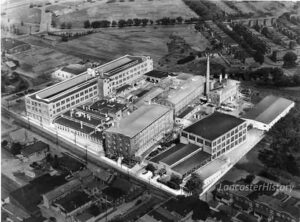
Armstrong was founded by Thomas M. Armstrong in Pittsburgh in 1860. Armstrong moved its first business operations to Lancaster in 1895 when a number of cork manufacturers in Lancaster agreed to come under the Armstrong corporate umbrella. The combined operation operated out of what was then the Lancaster Cork Company facility along New Holland Avenue. As the Lancaster Closure Plant of Armstrong Cork Company, the facility produced closures or bottle stoppers of various types, beginning with cork stoppers and eventually including metal crown and threaded caps as well as compression and injection molded plastic closures and bottles. The plant was sold to Kerr Glass Manufacturing in 1969 and has been home to the Lancaster Science Factory since 2008.
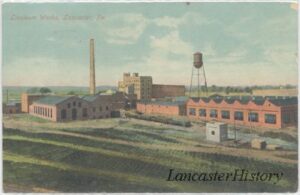
Armstrong opened a second plant in Lancaster in 1908 to manufacture linoleum, a material made from cork dust, a byproduct of the cork manufacturing process; Armstrong would continue to manufacture linoleum until 1974. In 1929, Armstrong moved its general offices from Pittsburgh to Lancaster. In 1980, the company changed its name to Armstrong World Industries. In 2016, Armstrong Flooring separated from Armstrong World Industries and emerged as a stand-alone publicly traded company. Both companies continue to maintain their corporate headquarters in Lancaster.
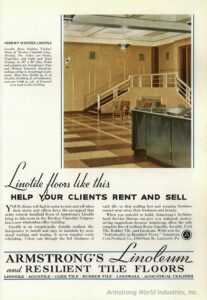
A versatile and environmentally friendly material, cork is waterproof, fire retardant, flexible, and durable. Its thermal and sound insulating properties make it practical for use in the construction industry for ceilings, roofs, walls, and flooring. Because it maintains its natural properties even when temperatures are extreme, cork can also be used in the refrigeration industry as an insulating material to insulate tanks and pipes or in thermal protection systems to guard against extreme heat in automotive gaskets or even in the space program. In everyday life, cork is used in the food and beverage industry, in sporting goods, in home goods, and even in shoes and other personal accessories such as travel cases, handbags, and wallets. In all these applications, the fact that this material is also lightweight and relatively cheap only adds to its appeal.
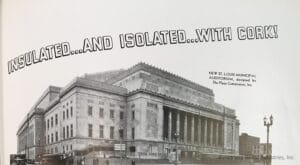
I especially enjoyed coming across these two Armstrong advertisements since I spent the bulk of my museum career working in Hershey and my wife is a native of St. Louis. The Hershey Chocolate Corporation’s new Windowless Office Building, completed in December 1935, provided a tightly controlled “scientifically” planned environment for employees. A fixture along Chocolate Avenue for eighty-five years, the building still serves provides important operational space for The Hershey Company. The St. Louis Municipal Auditorium, completed in 1934, was renamed the Kiel Auditorium in 1943. The building has hosted a variety of sporting events, concerts, and community functions, including my wife’s high school graduation!
Next up is Part III of Lancaster’s Cork Connection: From Portugal to Lancaster and Around the World with Dodge Cork.
From Archives Blog
